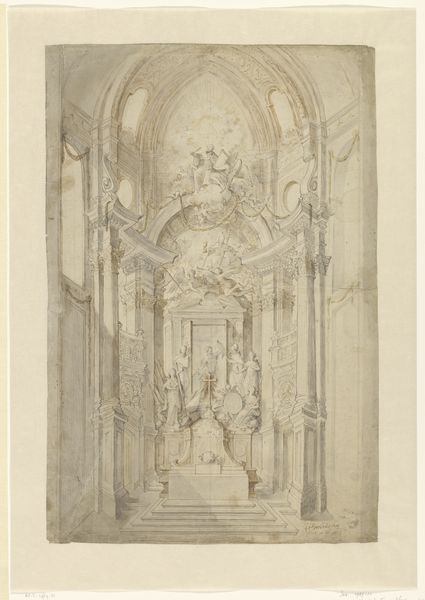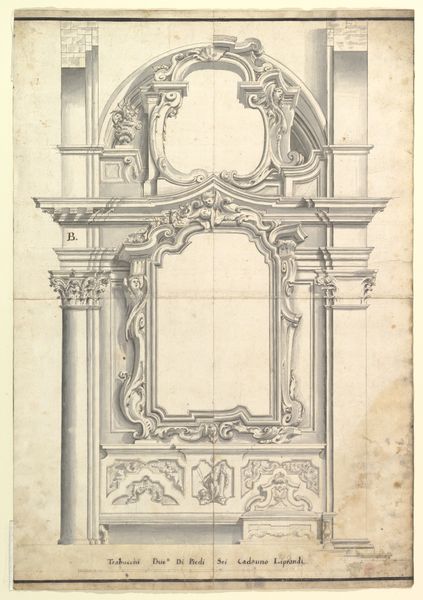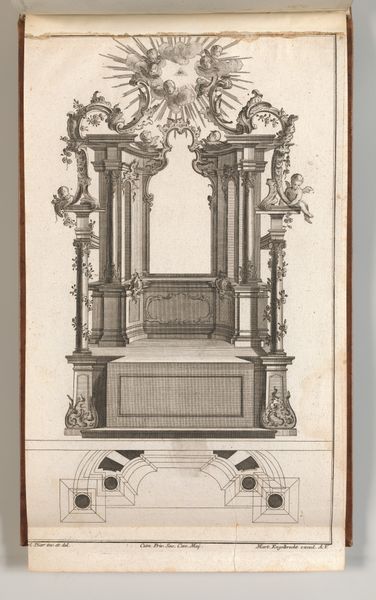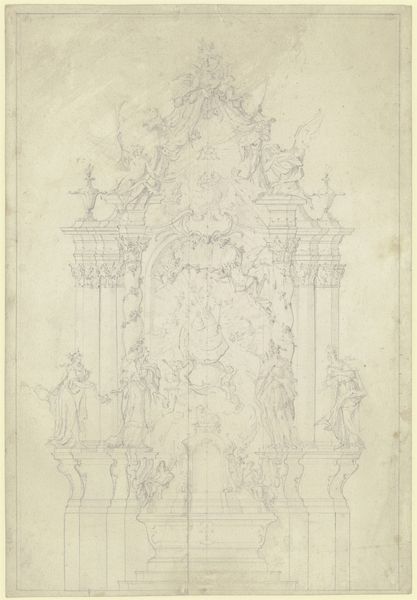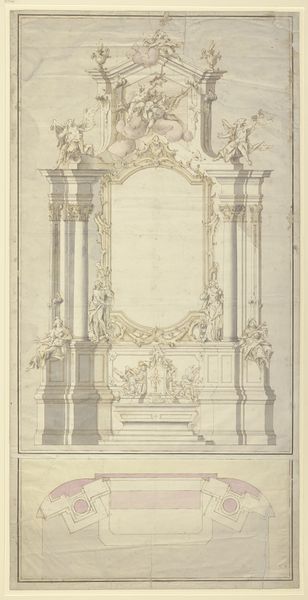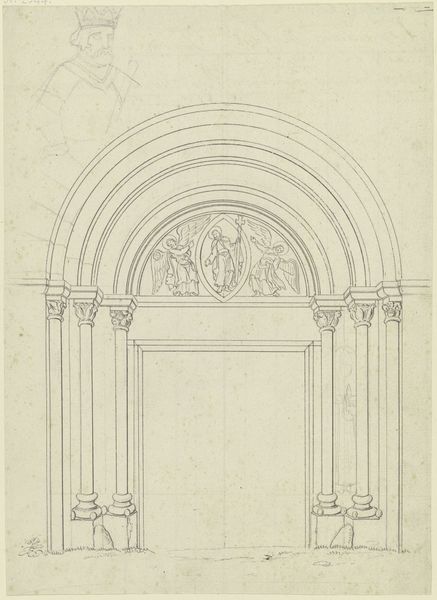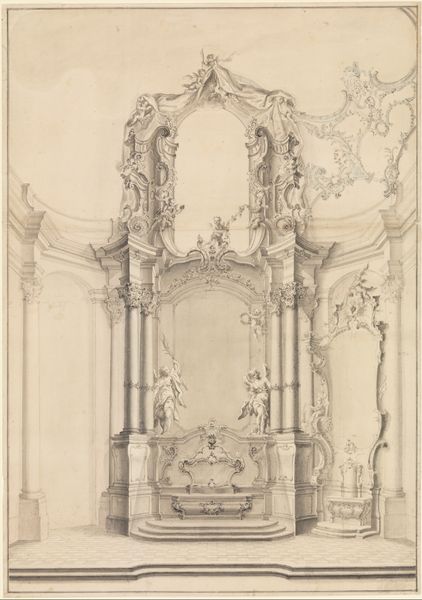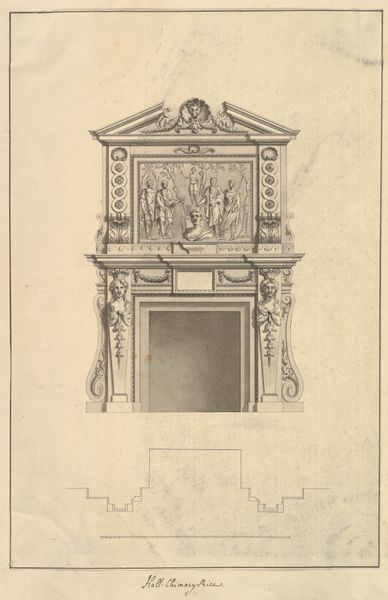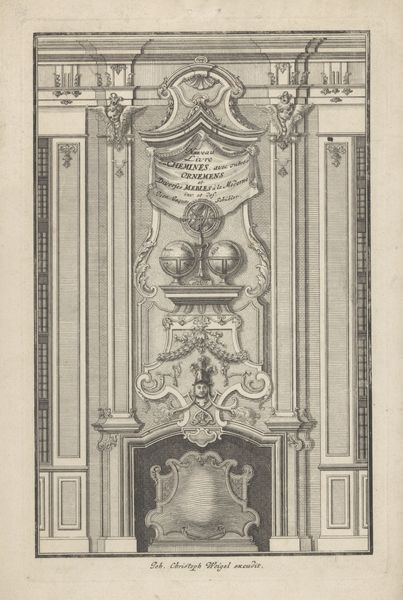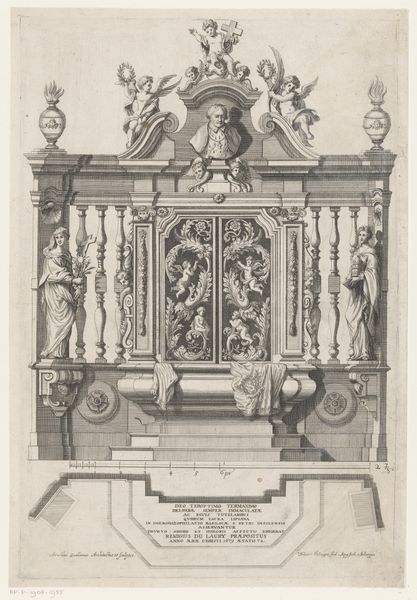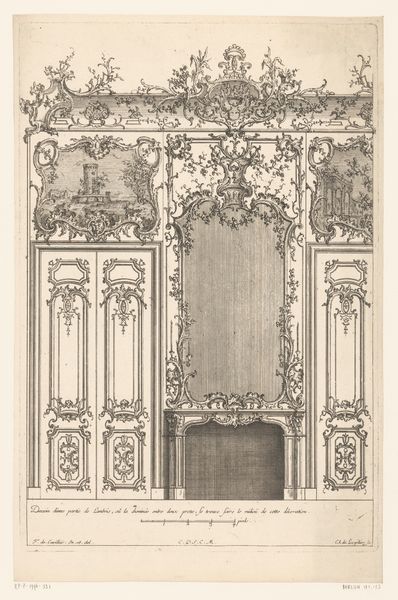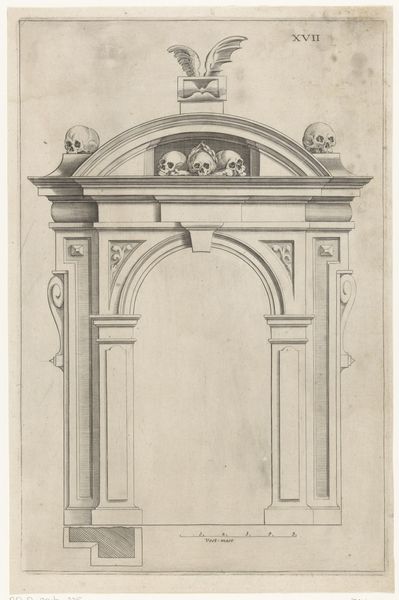
Ontwerp voor een schoorsteen met een spiegel en twee zittende figuren met kandelabers c. 1700 - 1705
0:00
0:00
drawing, pencil, architecture
#
drawing
#
baroque
#
figuration
#
pencil
#
architecture
Dimensions: height 274 mm, width 176 mm
Copyright: Rijks Museum: Open Domain
Curator: Let’s take a look at this intriguing drawing, "Design for a Chimney Piece with a Mirror and Two Seated Figures with Candelabra" by Jean Berain, dating back to around 1700-1705. It's currently held at the Rijksmuseum. What strikes you about it initially? Editor: Immediately, I see opulence rendered with delicate materials. It looks like graphite or black chalk on paper; this precise medium feels at odds with the grandeur of the design, focusing on production, draftsmanship, and planning over precious materials like marble or gold. Curator: Exactly, Berain was renowned for his Baroque style, heavy on symbolism and the glorification of power. Consider how the seated figures holding candelabras act as caryatids, supporting the weight of the entire structure visually. It evokes themes of strength, duty, and illumination. Editor: I’m more interested in what this suggests about class and consumption. Chimneys like this were markers of wealth; imagine the number of people involved in sourcing the materials, carving the ornaments, and installing this piece. Each angel, wreath, and sconce implicates layers of human labor and global networks of resource extraction. Curator: But look at the circular portrait at the top. Placed centrally like an all-seeing eye or deity. Wouldn't you agree that this imagery carries psychological significance and speaks to self-regard within a domestic space? Editor: Sure, the circular form resembles currency – minted to affirm power. Everything in this sketch served some utility: for impressing guests and accruing cultural capital, or even just warming up a chilly room. I’m interested in what Baroque homes might have excluded and what populations of servants or factory-workers labored unseen in cold shops while these fireplaces took form. Curator: I understand your points regarding labor. However, for me, the careful placement of symbolic elements—the crown above, the angels playing trumpets—they transform a mere chimney piece into a pronouncement of authority and divine right. Editor: We agree it is an object loaded with intention, from its materiality to its impact! Curator: Indeed! Seeing how cultural values manifest even in something as seemingly simple as interior decoration helps bridge history and modern life. Editor: Agreed! We must consider these design choices alongside production when understanding our inherited present.
Comments
No comments
Be the first to comment and join the conversation on the ultimate creative platform.

